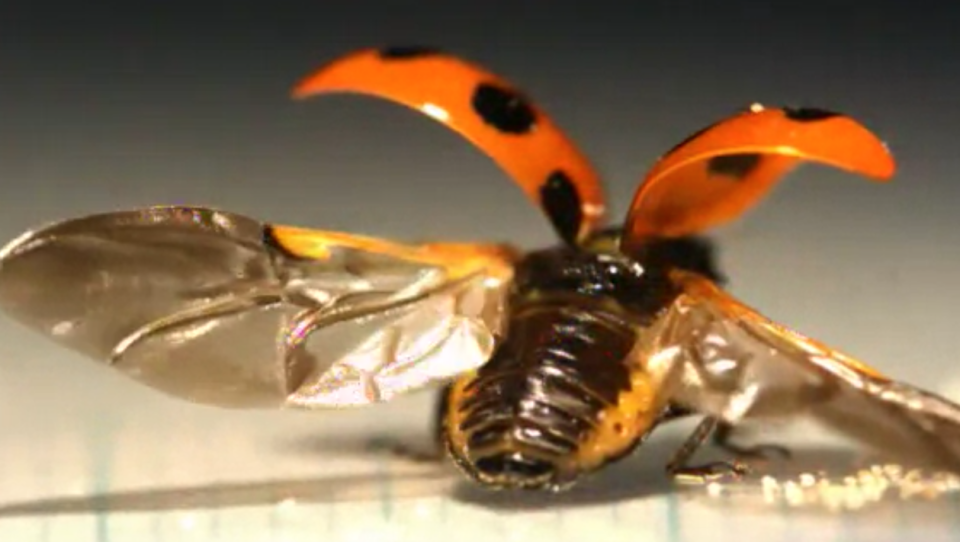With the help of high-speed cameras, CT scanners and some nail-art supplies, scientists in Japan have managed to catch a glimpse of the elaborate way that ladybugs fold their wings to tuck them away.
The research could have implications for everything from aeronautics to umbrellas.
The study, published this week in the Proceedings of the National Academy of Sciences, explored how ladybugs can have wings strong enough to fly with, but quickly collapsible so they can be tucked out of the way.
The wings, after all, are much larger than the black-spotted wing cases they fold down to fit inside — as is immediately obvious easy to see if you just watch a video of the wings unfolding.
But the researchers at the University of Tokyo explain that no one knew how the ladybugs put the wings away, since they actually shut the wing cases first — then pull the wings inside. The interesting action is tucked out of sight.
So they replaced those distinctive red and black cases with transparent ones — built out of a kind of UV-cured resin that's often used in nail art, according to a press release from the university. The artificial wing case, called an elytron, allowed the researchers to watch how the wing folded.
"I wasn't sure if the ladybug could fold its wings with an artificial elytron made of nail-art resin," says Kazuya Saito, a professor at the University of Tokyo and the lead author on the study. "So I was surprised when I found out it could."
The scientists used high-speed cameras to record the process, and CT scans of folded and unfolded wings to help figure out the precise pattern of folds.
The process by which the wings collapse is akin to origami — in fact, the scientists used origami paper to recreate portions of the wing folds.
And the wings remain stable when expanded partly because of veins that use "tape springs" — the kind of curve that allows carpenter tape to hold itself straight.
"The ladybugs' technique for achieving complex folding is quite fascinating and novel, particularly for researchers in the fields of robotics, mechanics, aerospace and mechanical engineering," Saito said, according to the university's press release.
Copyright 2017 NPR. To see more, visit http://www.npr.org/.




